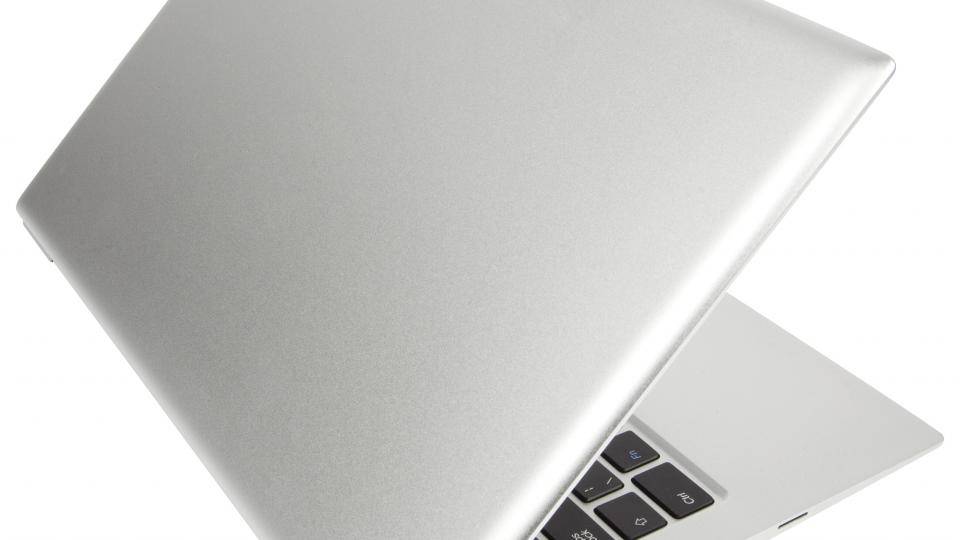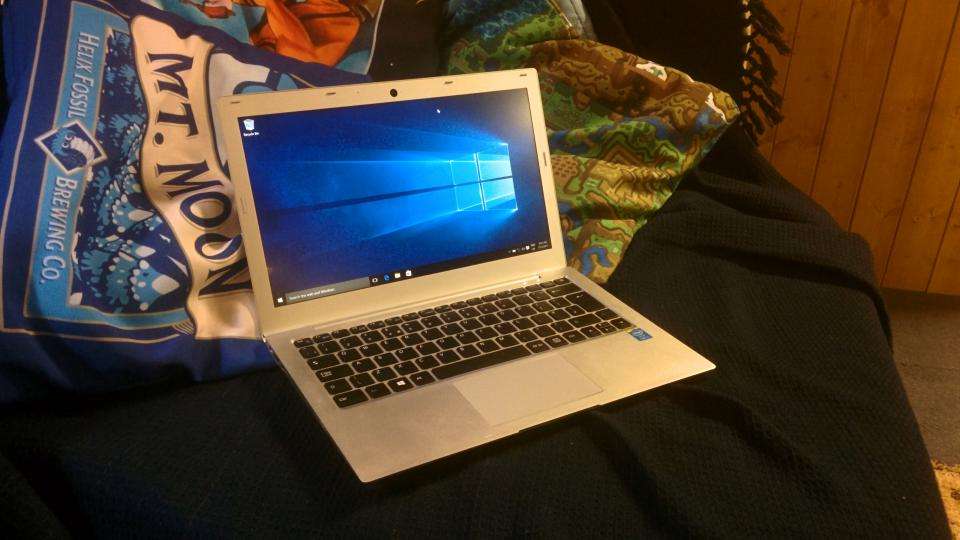There’s a lot to like about the travel-friendly Chillblast Helios. It will happily slip into a laptop bag or rucksack without weighing you down at 1.4kg, and the tapered design is 18mm at its thickest point - just a fraction thicker than the MacBook Air.
Comparisons with Apple’s ultra-portable laptop are almost unavoidable, as their designs are very similar at a cursory glance. Just like the Air, the Helios uses an aluminium chassis that helps cut down on weight and helps make the laptop feel like a premium product in your hands. The edges are a little sharp, but overall the chassis has respectable build quality and is generally pleasant to the touch.
It’s arguably a little plain, with matt silver used throughout and just a Chillblast logo stuck on the lid, although the silver has a slight speckled design upon closer inspection. There’s a bank of white LED status indicators above the keyboard, but they aren’t visible with the lid closed so you can’t tell if the laptop is active or not.

The Helios has a 14in display with a 1,920x1,080 resolution and a matt coating that helps to drastically cut down on screen reflections. Glossy screens might provide higher contrast, but we found the matt coating far easier on our eyes when working in direct sunlight. Our colour calibrator showed that the display’s performance was very respectable; while black levels of 0.37cd/m2 weren’t quite as deep as we would have liked, peak whites of 360.8cd/m2 were much better.
Contrast was also decent at a ratio of 970:1, and while 89% sRGB colour gamut coverage isn’t going to make the Helios the best choice for colour sensitive work, colours were still punchy and vibrant. We were pleased to see there wasn’t any noticeable backlight bleed, and both horizontal and vertical viewing angles were very good.
The dual-core Intel Core-i5 5200U inside the Helios runs at 2.2GHz, but can boost to 2.7GHz under the right thermal conditions. Our tough benchmarks, which are based around 4K video transcoding, caused the dual-core processor to struggle, even with 8GB of RAM, but a score of 75 is still respectable.
In part, performance is limited by the ultra-portable design, but we were still able to edit 1080p videos and it always felt responsive within Windows. For more day-to-day tasks, the Helios was a great performer. Its responsiveness, snappy boot times and application launch speeds were aided by the 250GB Samsung 850 Evo SSD. The Helios is configured with an M.2 SSD as standard but you do also have the option of adding a secondary 2.5in SSD or SSHD if you want additional storage.
